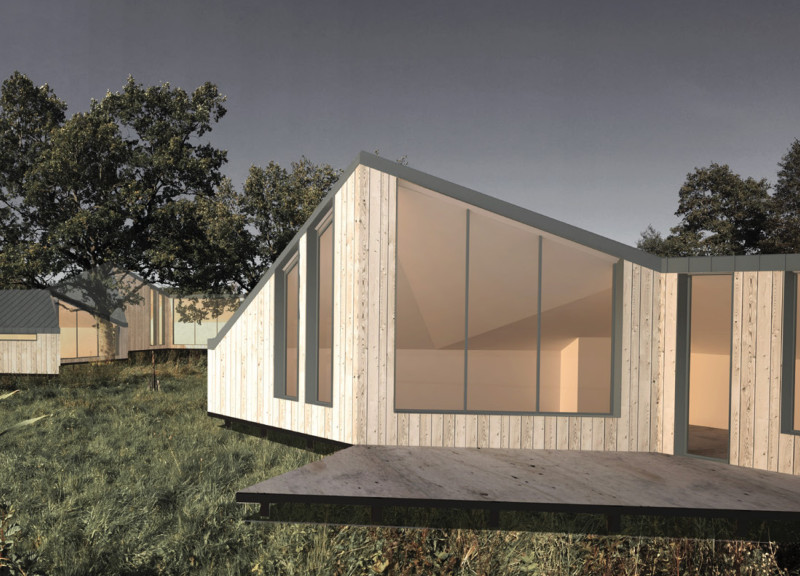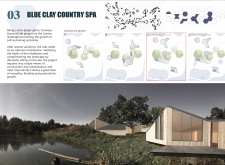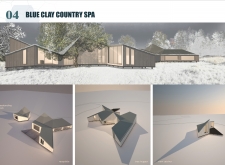5 key facts about this project
### Overview
Located in rural Latvia, the Blue Clay Country Spa is designed to foster a harmonious relationship between architecture and the natural landscape. The project consists of several interconnected structures that prioritize flexibility and sustainability, while adopting contemporary organic forms inspired by the local environment. The design aims to create a tranquil atmosphere conducive to wellness, integrating the built elements into the surrounding terrain.
### Site Integration and Modular Framework
The site responsiveness is a key focus of the spa's design. The structures are strategically positioned to enhance views of the natural scenery, employing a modular approach that allows for variation in orientation, consequently promoting a connection with the landscape. Each architectural module, including freestanding elements and viewing alcoves, contributes to a cohesive site layout while enabling future adaptability and expansion.
The architecture features varied heights and roof forms to address local climate needs, including slanted roofs that facilitate snow shedding and maximize daylight. Roofs are equipped to channel rainwater to storage systems, reinforcing the project's commitment to self-sustainability.
### Material Utilization
Careful selection of materials informs both the aesthetic character and functional performance of the spa. Natural wood cladding offers warmth and integrates with the locale, while large panes of glass enhance natural lighting and views, contributing to a serene environment. Steel provides structural integrity, particularly in the roofing system, while concrete underlies the flooring, balancing the lightweight elements of the design with necessary stability.
The design incorporates advanced sustainability measures, including wall and ceiling insulation for thermal efficiency, solar panels for renewable energy harnessing, and a snow melting system to facilitate maintenance during winter months. These elements collectively emphasize the project’s goal of reducing its ecological footprint while enhancing user experience.






















































